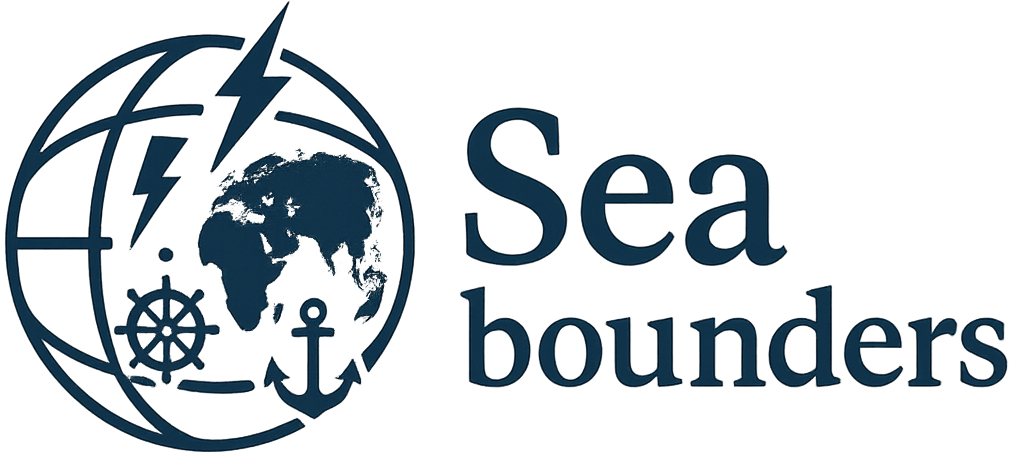Deck Logbook Reference: Wind, Sea, and Weather Conditions
🧭
Bridge
· 📅 04 Oct 2025
· 👁️ 23 views
Deck Logbook Reference: Wind, Sea, and Weather Condition Codes
Introduction
Deck logbooks require standardized meteorological observations for safety and reporting. The tables below compile the practical codes used for wind, sea state, visibility, sky condition, and wind direction.
Wind Force – The Beaufort Scale
Force | Name | Knots | Sea Condition |
|---|---|---|---|
0 | Calm | <1 | Sea like a mirror |
1 | Light Air | 1–3 | Ripples, no foam |
2 | Light Breeze | 4–6 | Small wavelets |
3 | Gentle Breeze | 7–10 | Large wavelets |
4 | Moderate Breeze | 11–16 | Small waves, whitecaps |
5 | Fresh Breeze | 17–21 | Moderate waves |
6 | Strong Breeze | 22–27 | Large waves, foam streaks |
7 | Near Gale | 28–33 | Sea heaps up |
8 | Gale | 34–40 | Moderately high waves |
9 | Strong Gale | 41–47 | High waves, spray |
10 | Storm | 48–55 | Very high waves |
11 | Violent Storm | 56–63 | Exceptionally high waves |
12 | Hurricane | 64+ | Air filled with foam & spray |
Sea State – WMO Code
Code | Description | Wave Height (m) |
|---|---|---|
0 | Calm (Glassy) | 0 |
1 | Rippled | 0–0.1 |
2 | Smooth | 0.1–0.5 |
3 | Slight | 0.5–1.25 |
4 | Moderate | 1.25–2.5 |
5 | Rough | 2.5–4 |
6 | Very Rough | 4–6 |
7 | High | 6–9 |
8 | Very High | 9–14 |
9 | Phenomenal | ≥14 |
Visibility (Logbook Numeric Codes – 0 to 8)
Code | Meaning | Distance |
|---|---|---|
0 | Dense fog – objects at 50 m not visible | ~50 m |
1 | Thick fog | ~200 m |
2 | Fog | ~1,000 m |
3 | Moderate/neutral fog | ~2,000 m |
4 | Mist or light haze | ~4,000 m |
5 | Poor visibility | ~7,000 m |
6 | Normal visibility | ~12,000 m |
7 | Good visibility | ~20,000 m |
8 | Very good visibility – objects beyond 20,000 m visible | >20,000 m |
Sky Condition & Meteorological Abbreviations
Code | Meaning |
|---|---|
b | Blue sky (0/8 clouded) |
bc | Sky partly clouded (3–5/8 clouded) |
c | Cloudy (6–8/8 clouded) |
o | Overcast sky (completely covered with a uniform layer of thick/heavy cloud) |
d | Drizzle |
e | Wet air (humid, no rain) |
f | Fog |
g | Gale |
h | Hail |
l | Lightning |
m | Mist |
p | Passing showers |
q | Squall / squally weather |
r | Rain |
rs | Sleet (rain and snow together) |
s | Snow |
t | Thunder |
u | Ugly, threatening sky |
v | Pure air (abnormally clear visibility) |
w | Dew |
x | Hoar frost |
y | Dry air |
z | Haze |
Wind Direction
Abbr. | Direction | Degrees |
|---|---|---|
N | North | 0°/360° |
NNE | North-Northeast | 22.5° |
NE | Northeast | 45° |
ENE | East-Northeast | 67.5° |
E | East | 90° |
ESE | East-Southeast | 112.5° |
SE | Southeast | 135° |
SSE | South-Southeast | 157.5° |
S | South | 180° |
SSW | South-Southwest | 202.5° |
SW | Southwest | 225° |
WSW | West-Southwest | 247.5° |
W | West | 270° |
WNW | West-Northwest | 292.5° |
NW | Northwest | 315° |
NNW | North-Northwest | 337.5° |
Conclusion
Standardized reporting of wind, sea, visibility, and weather ensures that navigational records are accurate and internationally consistent. These codes form the foundation of deck logbook entries and are essential for safe maritime operations.
💬 Comments (0)
No comments yet. Be the first to comment!
We use cookies to improve your experience. Learn more.







